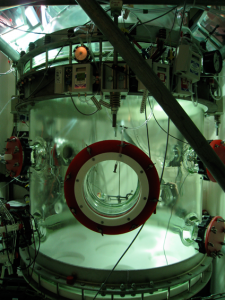Special Report: New breakthrough in atmospheric sciences

New breakthrough in atmospheric sciences
Physicist Mikael Ehn is the principal investigator in a group of scientists which succeeded in identifying compounds that aid aerosol formation. Ehn works as a lecturer in the University of Helsinki, Finland, but many of his collaborators are from Research Centre Juelich, Germany. The scientific results of the group were published in Nature this spring.
“Forests emit large quantities of volatile organic compounds to the atmosphere. These molecules can react with other species in the air to increase their oxygen content in a way that we had not understood before now. With this high oxygen content, new compounds are able to form secondary aerosol particles. They can, in turn, affect Earth’s radiation balance by scattering sunlight back to space, or by increasing the cloud cover,” Ehn explained.
The findings of Ehn’s group clarify the feedback mechanisms between the biosphere and the atmosphere. This feedback mechanism lies behind many climate phenomena.
Mikael Ehn belongs to an international network of atmospheric scientists headed by Finnish Academy Professor Markku Kulmala. The network consists of about 400 physicists, chemists, meteorologists and forest scientists all over the world.
The scientific success of Kulmala´s work is based on observational stations located in forest areas of Finland, Sweden and Estonia. They are field laboratories equipped with state-of-the-art instruments constructed to measure biosphere-atmosphere interactions. The measurement data is used to test and develop theories of atmospheric physics.
Markku Kulmala
Director
Department of Physics
University of Helsinki
tel: +358 9191 50756
[email protected]
http://www.physics.helsinki.fi